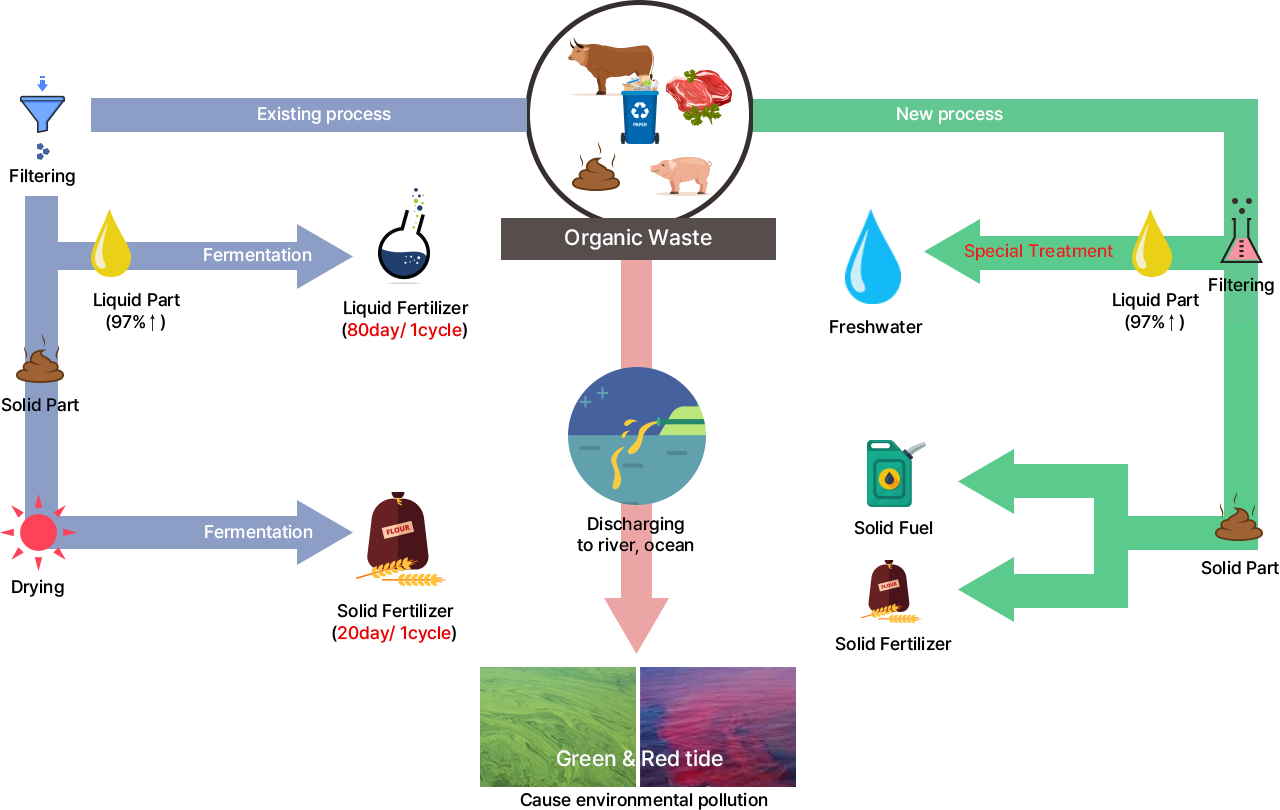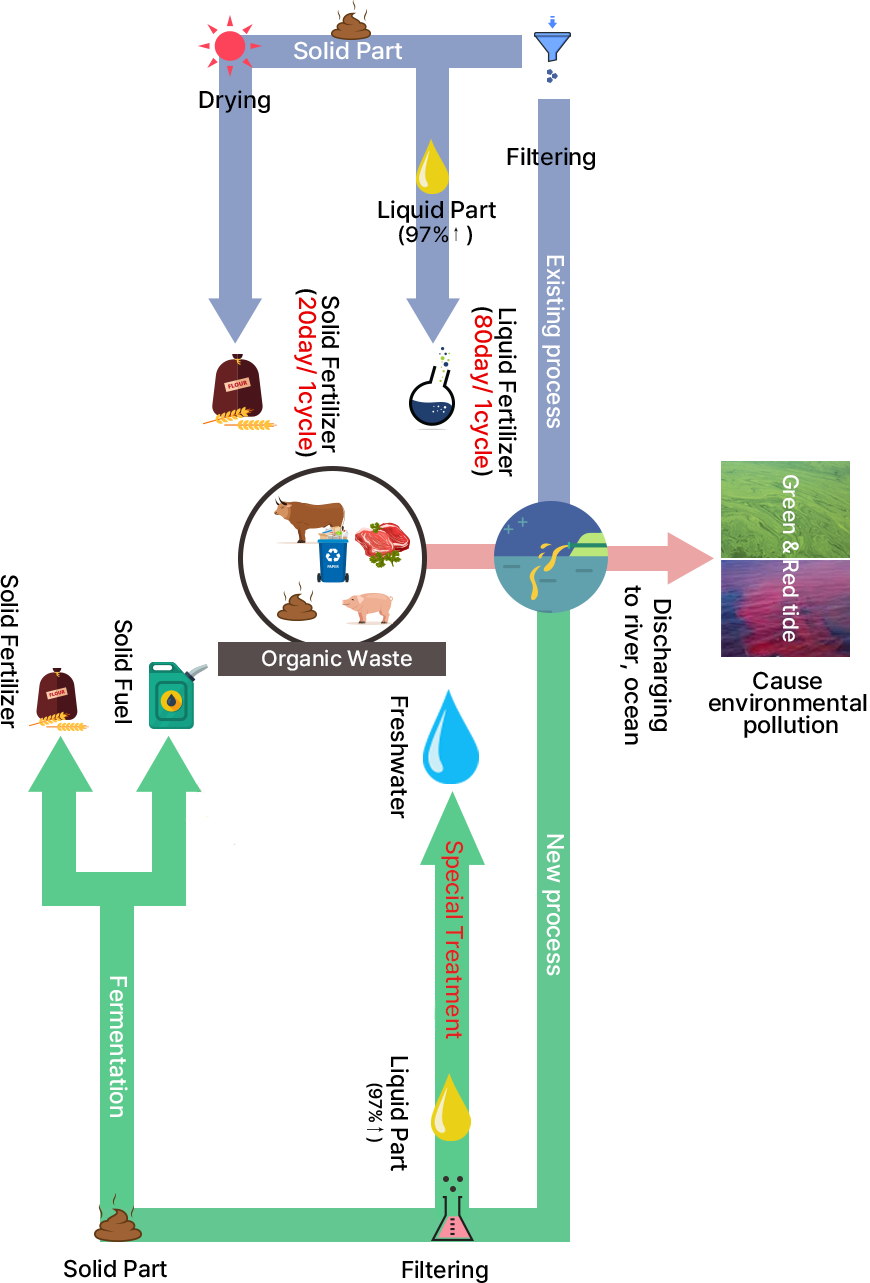
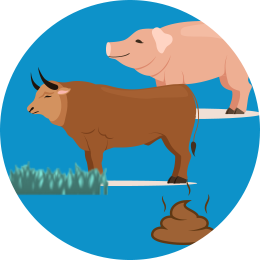
Livestock manure during breeding
Treatment Cost : $20/ton in Korea
$1.6 trillion / year
CO2 Emission : 18 million ton / year
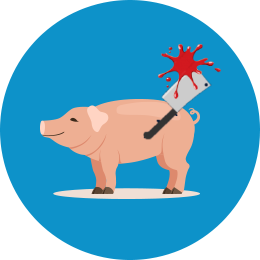
Waste from the slaughter process
Treatment Cost : $130/ton in Korea
$20 billion / year
CO2 Emission : 0.2 million ton / year
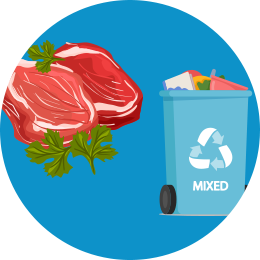
Food waste
Treatment Cost : $160/ton in Korea
$800 billion / year
CO2 Emission : 9 million ton / year
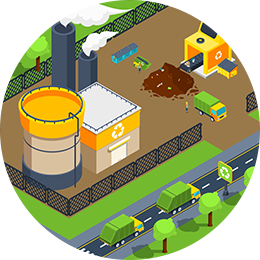
Fermentation – Fertilizer production
- Reduced liquid fertilizer
- Increased compost Production
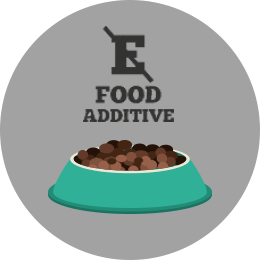
Feeding through blood coagulation
Food/medicine additive
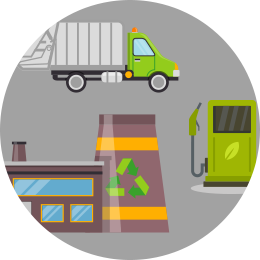
Use of waste resources as natural
gas Biogas (CH4, H2, etc.)
Organic Waste Circulation
‘ONI STOP’ Project
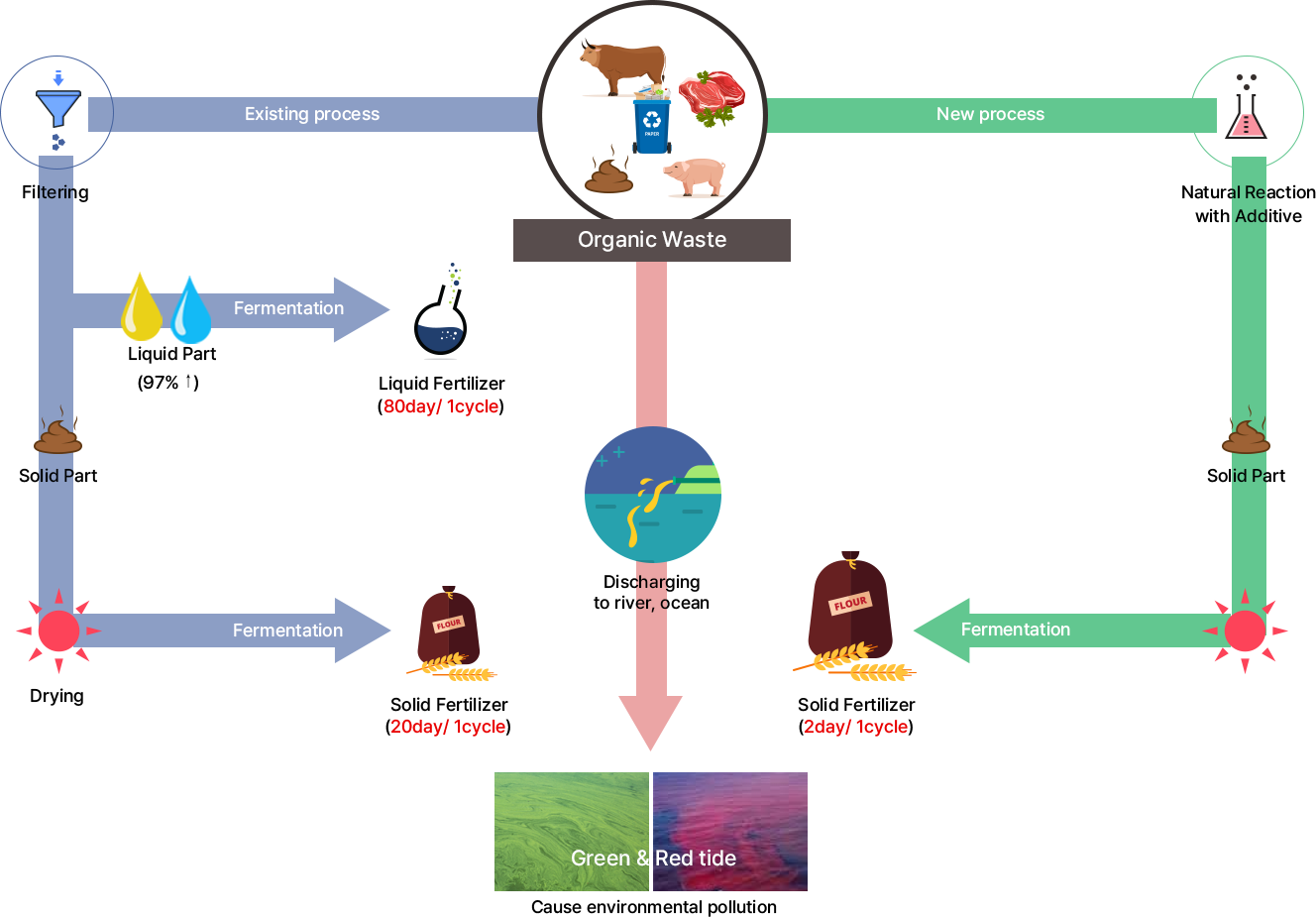
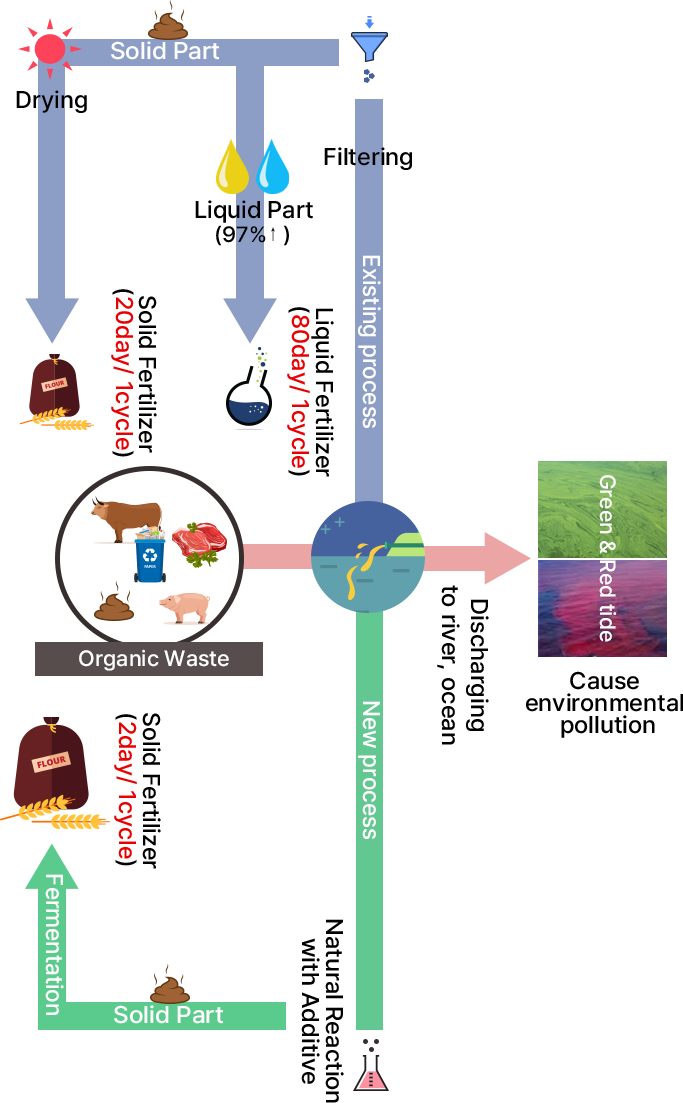
3D Video
‘POO-GREEN’ Project
